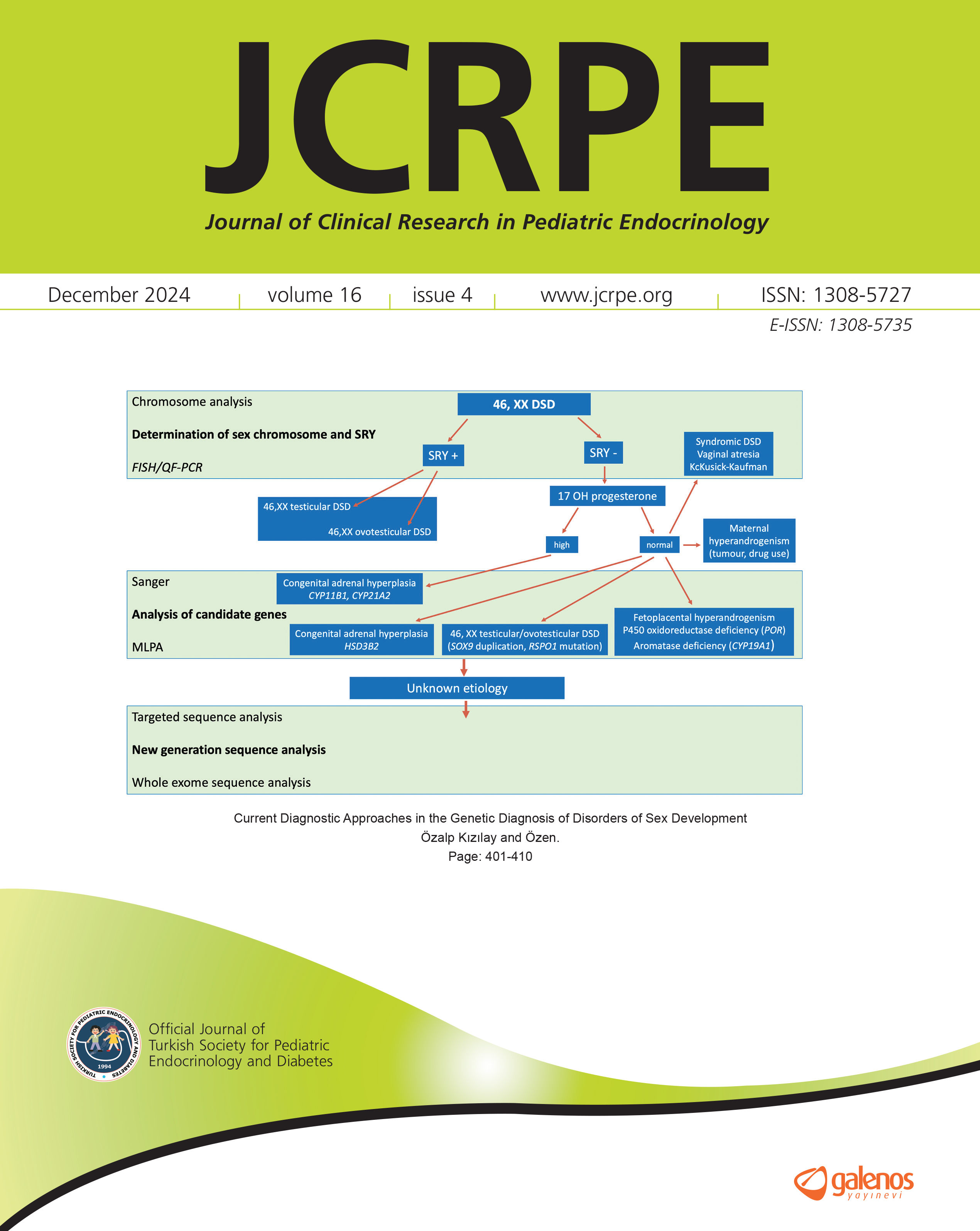Detection of SHOX Gene Variations in Patients with Skeletal Abnormalities with or without Short Stature
Semra Gürsoy1, Filiz Hazan2, Ayça Aykut3, Özlem Nalbantoğlu4, Hüseyin Anıl Korkmaz5, Korcan Demir6, Behzat Özkan4, Özgür Çoğulu71University of Health Sciences Turkey, Dr. Behçet Uz Child Disease and Pediatric Surgery Training and Research Hospital, Clinic of Pediatric Genetics, İzmir, Turkey2University of Health Sciences Turkey, Dr. Behçet Uz Child Disease and Pediatric Surgery Training and Research Hospital, Clinic of Medical Genetics, İzmir, Turkey
3Ege University Faculty of Medicine, Department of Medical Genetics, İzmir, Turkey
4University of Health Sciences Turkey, Dr. Behçet Uz Child Disease and Pediatric Surgery Training and Research Hospital, Clinic of Pediatric Endocrinology, İzmir, Turkey
5Manisa City Hospital, Clinic of Pediatric Endocrinology, Manisa, Turkey
6Dokuz Eylül University Faculty of Medicine, Department of Pediatric Endocrinology, İzmir, Turkey
7Ege University Faculty of Medicine, Department of Pediatric Genetics, İzmir, Turkey
Objective: SHOX gene mutations constitute one of the genetic causes of short stature. The clinical phenotype includes variable degrees of growth impairment, such as Langer mesomelic dysplasia (LMD), Léri-Weill dyschondrosteosis (LWD) or idiopathic short stature (ISS). The aim of this study was to describe the clinical features and molecular results of SHOX deficiency in a group of Turkish patients who had skeletal findings with and without short stature.
Methods: Forty-six patients with ISS, disproportionate short stature or skeletal findings without short stature from 35 different families were included. SHOX gene analysis was performed using Sanger sequencing and multiplex ligation-dependent probe amplification analysis.
Results: Three different point mutations (two nonsense, one frameshift) and one whole SHOX gene deletion were detected in 15 patients from four different families. While 4/15 patients had LMD, the remaining patients had clinical features compatible with LWD. Madelungs deformity, cubitus valgus, muscular hypertrophy and short forearm were the most common phenotypic features, as well as short stature. Additionally, hearing loss was detected in two patients with LMD.
Conclusion: This study has presented the clinical spectrum and molecular findings of 15 patients with SHOX gene mutations or deletions. SHOX deficiency should be especially considered in patients who have disproportionate short stature or forearm anomalies with or without short stature. Although most of the patients had partial or whole gene deletions, SHOX gene sequencing should be performed in suspected cases. Furthermore, conductive hearing loss may rarely accompany these clinical manifestations.
Manuscript Language: English



























